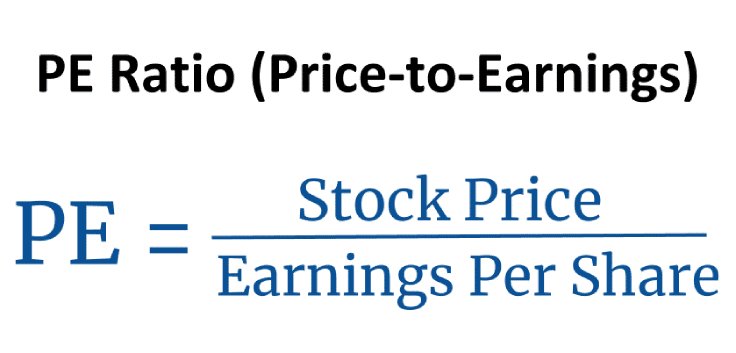Trailing Twelve Months (TTM)
Trailing twelve months, or TTM, is a finance term that represents a company's financial performance over the past year.
It is calculated by adding up the numbers for the last four quarterly periods.
For example, if the latest report was for the third quarter (Q3), TTM would be the sum of Q4 of last year plus Q1, Q2, and Q3 of this year. Here's the formula:
TTM = Q (latest) + Q (1 quarter ago) + Q (2 quarters ago) + Q (3 quarters ago)
TTM allows you to see a full year of up-to-date financials at any time, without needing to wait for a fiscal year to conclude. Using four quarters of data also helps smooth any effects of seasonality and provides more accuracy than using only the year-to-date data.
Trailing twelve months is also used when calculating other metrics, such as the PE ratio, dividend yield, earnings per share, and more.
Below is a detailed overview of TTM, including what it is and how to use it.
What is TTM?

Trailing twelve months (TTM) figures include the financial metrics for the last four quarters, which amounts to a full year of business performance.
Therefore, this calculation gives you a full year of up-to-date financials at any time.
The word “trailing” here means the same as “past,” indicating that numbers from the past are used as opposed to forward numbers, which look at future estimates.
Investors and analysts often use TTM calculations when looking at a company's P/E ratio, dividend yield, and earnings per share (EPS).
TTM numbers are useful because they are the most current annualized numbers. They also reduce the effects of seasonality or misrepresentations that come from outlier events.
Additionally, investors can use TTM to easily compare two different companies.
Lastly, it's important to note that the time frame for your TTM calculation will often not match the company's full fiscal year of reporting that it uses for accounting purposes.
SummaryTrailing twelve months (TTM) financials are a way to analyze company performance on a rolling basis. They can reveal trends that are developing in real-time while also avoiding the distortion that comes from temporary, outlier events.
Formula: how to calculate TTM
Publicly traded companies report their financials every quarter based on generally accepted accounting principles (GAAP).
The simplest way to calculate a company's TTM financials is to add up the numbers from the last four quarterly reports.
For example, let's say that the latest report was for the third quarter (Q3). You can then calculate the TTM numbers by adding up Q4 of last year plus Q1, Q2, and Q3 of this year.
Here's the formula, using the above example:
TTM = Q (latest) + Q (1 quarter ago) + Q (2 quarters ago) + Q (3 quarters ago)
As a more specific example, if you were looking at Apple's (AAPL) financials in November of 2022 and wanted to calculate the TTM revenue, you would add up the revenue from Q4 2021 and Q1–Q3 2022:
- Q4 2021: $123.9 billion
- Q1 2022: $97.2 billion
- Q2 2022: $82.9 billion
- Q3 2022: $90.1 billion
TTM revenue: $123.9 + $97.2 + $82.9 + $90.1 = $394.1 billion
An investor can do this for most numbers on the income statement and cash flow statement.
Alternative method
There is an alternative method for calculating TTM, but it is slightly more complicated than simply adding up the last four quarters.
If the latest quarterly report was for Q1, then the investor can add those numbers to the last full year's numbers from the annual report and subtract the previous year's Q1 numbers.
Here is the formula:
TTM figure = most recent quarter(s) + last full year - corresponding quarter(s) from last year
If the company has just released its annual report, then there's no need to calculate TTM numbers. In this case, the full year's financials would be the same as the TTM numbers.
SummaryThe simplest way to calculate TTM data is to add the last four quarters of data for the company using publicly available quarterly reports.
Why annualized financial numbers are useful
Annualized TTM numbers are highly useful for four main reasons:
- More current than the last fiscal year's numbers
- Less volatile than quarterly numbers
- Indicative of trends that might be developing in the business
- Help smooth out the effects of seasonality
To get the full picture of a company's financial performance, it's critical to use data from a whole year.
Simply multiplying a single quarter's earnings by four would be misleading. For example, that would drastically misrepresent the numbers for a company relying heavily on holiday sales.
Instead, TTM numbers represent all seasons, including both weak and strong sales seasons.
TTM financials are also a great way to get a full year's worth of financial data without having to wait for the full fiscal year to end.
The last full fiscal year's number may already be outdated, especially late in the year. If the company is well into Q3 or Q4, then the last full year's numbers may not be representative of current performance. TTM numbers, on the other hand, are always up to date.
SummaryAnnualized TTM numbers give investors a current view of a company without having to wait for the publication of the latest annual report.
Financial metrics that use TTM
Many financial metrics use TTM numbers.
One example is the price-to-earnings (P/E) ratio, which is calculated by dividing the stock price by the trailing earnings per share (EPS) in the last four quarters.
Here is the formula:
P/E ratio = stock price / EPS (TTM)
Unless otherwise noted, the P/E ratio uses the trailing twelve months' EPS.
You can also sometimes see a forward P/E ratio, which uses the estimated future EPS in the next four quarters or the next fiscal year.
Other valuation ratios that use TTM numbers include the P/S ratio and the P/FCF ratio.
Many finance websites list TTM financials to show investors the most up-to-date numbers. For example, revenue and EPS may be displayed as "revenue (TTM)" and "EPS (TTM)" to show that the figures are for the past 12 months.
SummaryThe TTM calculation appears in several common metrics including the P/E ratio, EPS, the P/S ratio, and the P/FCF ratio.
What is TTM yield?
A TTM dividend yield is calculated by adding up the dividends from the last four quarters, then dividing that by the current stock price.
For example, let's say a company's stock price is $100 per share, and they paid $0.50 in dividends in each of the last four quarters.
TTM dividend yield: ($0.50 + $0.50 + $0.50 + $0.50) / $100 = 2%
The TTM yield can also be used to calculate the dividend yield of an exchange-traded fund (ETF) or mutual fund.
This measurement is particularly useful for value investors who tend to focus on undervalued investments that offer relatively high dividend payments.
SummaryTTM yield is a way to measure and compare the value of a company's dividends over time. It's calculated by adding up the dividends of the last four quarters and then dividing by the current stock price.
What is TTM growth?
It's possible to use TTM numbers to calculate annualized changes in financial performance.
If you want to know how much a company has grown in the past year, you can divide the latest TTM numbers by the numbers in the preceding 12-month period.
For example, if the trailing twelve months were Q4 of 2021 and Q1–Q3 of 2022, then you'd divide that TTM number by Q4 of 2020 and Q1–Q3 of 2021 to see the annualized growth or decline.
These growth/decline numbers will be more up to date than the last full fiscal year's comparison, but much less volatile than the growth/decline numbers for a single quarter.
SummaryTTM growth is a way to view a company's year-over-year growth. It's calculated by dividing the latest TTM numbers by the numbers in the preceding 12-month period.
Frequently asked questions
Below are some frequently asked questions about TTM.
Does TTM include the current month?
Generally speaking, no, since the data comes from quarterly reports.
TTM includes the last twelve months preceding the most recently concluded quarter's end. Including the current month would be misleading or impossible in most cases, since it's incomplete.
Where can you find the data for TTM?
The location of the data for a TTM calculation depends on what is being measured. For example, if you want to know TTM free cash flow, you'll need the cash flow statement.
But if you want to calculate the TTM for earnings per share (EPS), you will need to look at the income statement.
Is TTM the same as the last 12 months?
If you're calculating TTM using data from a publicly traded company, you will need to use the latest financial statements, which are released quarterly.
Therefore, the TTM may not be exactly the last twelve months. Instead, it will be the last reported twelve months or the last three business quarters.
What is TTM profit and loss?
A profit and loss statement, sometimes referred to as an income statement, shows the revenue, costs, and expenses of a company for a specific period.
Therefore, TTM profit and loss reports these same categories over the last twelve months.
The takeaway
TTM is a method of calculating the performance of a company over the last twelve months. It can be applied to several measurements, including the P/E ratio, EPS, and dividend yield.
The calculation presents a picture of a company without the distortions that can come from viewing short-term performance, such as one-time or seasonal events. TTM is also a way to get up-to-date financial information at any time.
Investors often prefer TTM data since it is current but also seasonally adjusted. TTM data also makes it easy to compare the overall performance of one company to another.
You can use TTM numbers to evaluate a company's performance at any time of the year, without needing to wait for the current calendar or fiscal year to end.





